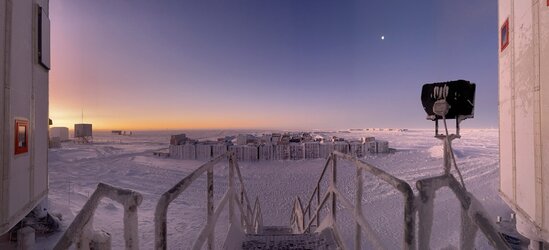Accept all cookies Accept only essential cookies See our Cookie Notice

About ESA
The European Space Agency (ESA) is Europe’s gateway to space. Its mission is to shape the development of Europe’s space capability and ensure that investment in space continues to deliver benefits to the citizens of Europe and the world.
Highlights
ESA - United space in Europe
This is ESA ESA facts Member States & Cooperating States Funding Director General Top management For Member State Delegations European vision European Space Policy ESA & EU Responsibility & Sustainability Annual Report Calendar of meetings Corporate newsEstablishments & sites
ESA Headquarters ESA ESTEC ESA ESOC ESA ESRIN ESA EAC ESA ESAC Europe's Spaceport ESA ESEC ESA ECSAT Brussels Office Washington OfficeWorking with ESA
Business with ESA ESA Commercialisation Gateway Law at ESA Careers Cyber resilience at ESA IT at ESA Newsroom Partnerships Merchandising Licence Education Open Space Innovation Platform Integrity and Reporting Administrative Tribunal Health and SafetyMore about ESA
History ESA Historical Archives Exhibitions Publications Art & Culture ESA Merchandise Kids Diversity ESA Brand Centre ESA ChampionsLatest
Space in Member States
Find out more about space activities in our 23 Member States, and understand how ESA works together with their national agencies, institutions and organisations.
Science & Exploration
Exploring our Solar System and unlocking the secrets of the Universe
Go to topicAstronauts
Missions
Juice Euclid Webb Solar Orbiter BepiColombo Gaia ExoMars Cheops Exoplanet missions More missionsActivities
International Space Station Orion service module Gateway Concordia Caves & Pangaea BenefitsLatest
Space Safety
Protecting life and infrastructure on Earth and in orbit
Go to topicAsteroids
Asteroids and Planetary Defence Asteroid danger explained Flyeye telescope: asteroid detection Hera mission: asteroid deflection Near-Earth Object Coordination CentreSpace junk
About space debris Space debris by the numbers Space Environment Report In space refuelling, refurbishing and removingSafety from space
Clean Space ecodesign Zero Debris Technologies Space for Earth Supporting Sustainable DevelopmentLatest
Applications
Using space to benefit citizens and meet future challenges on Earth
Go to topicObserving the Earth
Observing the Earth Future EO Copernicus Meteorology Space for our climate Satellite missionsCommercialisation
ESA Commercialisation Gateway Open Space Innovation Platform Business Incubation ESA Space SolutionsLatest
Enabling & Support
Making space accessible and developing the technologies for the future
Go to topicBuilding missions
Space Engineering and Technology Test centre Laboratories Concurrent Design Facility Preparing for the future Shaping the Future Discovery and Preparation Advanced Concepts TeamSpace transportation
Space Transportation Ariane Vega Space Rider Future space transportation Boost! Europe's Spaceport Launches from Europe's Spaceport from 2012Latest

Pillar of light
Thank you for liking
You have already liked this page, you can only like it once!
A vertical beam of sunlight appears to shoot up into the sky outside Concordia research station in Antarctica in this image taken by ESA-sponsored medical doctor Hannes Hagson.
Known as a sun pillar, this optical phenomenon occurs when sunlight is reflected from tiny ice crystals suspended in the atmosphere. Though it appears to reach from the sun itself, the pillar is not physically located above or below the sun. But it’s not just the sun that creates this optical illusion. Moonlight, and even streetlights, can create the same effect in icy conditions, in which case it is known more generally as a light pillar.
Light pillars belong to the family of optical phenomena known as halos. The Antarctic sky during spring and summer is ripe for both, especially at higher altitudes. Concordia station is located on the Antarctic plateau known as Dome C, 3233 m above sea level.
Hannes is spending a year at the remote base to facilitate biomedical experiments on both his 11 crew mates and himself, all in the name of science and space exploration.
Antarctica has all the wonder and appeal of space; it is harsh, vast and mysterious. But it also has something extra going for it: easier access.
Over the course of a year, Hannes has been sampling and recording the effects of lack of sunlight (during four-month winter) and less oxygen (due to the altitude) on himself and his crew for researchers developing countermeasures to altered motor skills, memory, sleep patterns and moods.
As the Antarctic summer approaches, Hannes and his winter-over crew are nearly at the end of their residency, and will soon prep the base for the arrival of the summer research campaign.
Follow life at the base on the Chronicles from Concordia blog.
-
CREDIT
ESA/IPEV/PNRA–H. Hagson -
LICENCE
ESA Standard Licence

Winter, over

Telling sunset

The long goodbye

Isolate in Antarctica, for science















 Germany
Germany
 Austria
Austria
 Belgium
Belgium
 Denmark
Denmark
 Spain
Spain
 Estonia
Estonia
 Finland
Finland
 France
France
 Greece
Greece
 Hungary
Hungary
 Ireland
Ireland
 Italy
Italy
 Luxembourg
Luxembourg
 Norway
Norway
 The Netherlands
The Netherlands
 Poland
Poland
 Portugal
Portugal
 Czechia
Czechia
 Romania
Romania
 United Kingdom
United Kingdom
 Slovenia
Slovenia
 Sweden
Sweden
 Switzerland
Switzerland
























